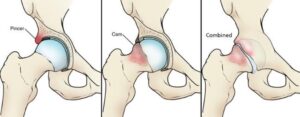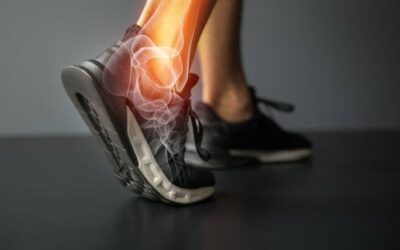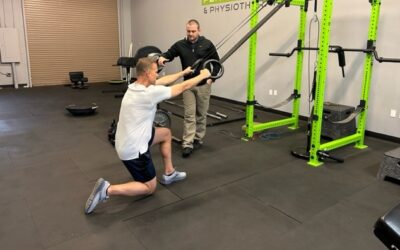Arizona’s fall weather brings out the athlete in all of us. The most common sport people take part in? Running.
Why?
You just lace up a pair of shoes and start your run. Easy.
What we have been noticing amongst our recreational and competitive runners is that they are starting to experience groin pain when they run. It’s rather common in runners, but many people don’t know what to do about it.
The groin region is one of the areas where we just tend to ignore when it comes to pain. Why?
First, it is a sensitive area for us to talk about and describe the pain.
Second, the groin is a complex part of the body. There are a lot of body systems at play in this region.
Lastly, combine the first two reasons and you can see why people are nervous and afraid to talk about pain in that area. It could be muscular, but what if it isn’t? What kind of exams must be performed to find the answer?
This makes it nearly impossible to self-diagnose your pain without seeking advice from a trusted medical professional.
Even though you can’t perform an accurate self-assessment, knowing your pain can be a big help in learning how to overcome it! Make sure when you DO seek out the medical professional for specific advice, you have a nice log of the pain – intensity, frequency, aggravating factors, alleviators, etc.
But, let’s get into why groin pain happens in runners and what it might mean.
Pain Symptoms:
Hip pain in general is very common for runners. The pain can be on the back side of the hips, outside of the hips, front of the hips, or into the groin. For the purpose of this article, let’s keep it to the groin pain.
It can be sharp with movements and lifting of the leg. Most of the time, groin pain is described as a deep ache. It can radiate from the groin down the entire upper leg on the inside.
Typically, popping, clicking, and catching is not seen with groin pain. But, that does not mean it can’t.
The way your pain behaves will help give the clinician a better ability to give you a diagnosis for your pain.
Potential Diagnoses for Groin Pain
Femoracetabular Impingement
The most common diagnosis we see in our runners with groin pain is Femoracetabular Impingement (also known as FAI, that is much easier to say). To go with the name of the diagnosis, it is an impingement in the hip.
This typically causes a pinching sensation in the groin with movement and then a dull ache around the groin when not being active. These symptoms can come and go depending on how ‘pissed off’ the hip is.

Adductor Strain
There are various levels of a strain, but most runners have a low-level strain. Especially with the distance runners vs the sprinters.
Pain is more of a tightness with some ache that typically gets worse with the more intense the exercise is.
For those with a higher grade strain, this would be a sharp pain in the groin. This could also cause bruising/discoloration in the hip adductors.
Those are the two most diagnoses for groin pain in runners. Typically they are the easiest to identify based on symptoms and assessments.
Some diagnoses, however, are harder to differentiate…
Sports Hernias
Also termed Athletic Pubalgia. These might have a slight, dull ache in the groin when performing just daily activities. The pain can become very sharp and unberable when performing anything that requires being really active. It can make it even difficult to just stand still.
Sports hernias are caused by inflammation in the pubic symphosis. (INSERT PHOTO)
Osteitis Pubis
Pain is typically right dab in the middle of your legs/groin areas. Pain is felt very deep and very localized.
It’s typically caused by aggravation in the joint cartilage, as the pubic symphysis acts as an attachment point for many of the hip adductor muscles.
Because of the location of the Osteitis Pubis and Sports Hernias, it is very difficult to diagnose with a physical therapy evaluation. Typically, an MRI would be needed to confirm it…but you really don’t need a confirmation.
The treatment for them is basically the same, no need to differentiate between the two.
Femoral Neck Stress Fracture
This one is very common amongst distance runners, more females than males, who have recently added a lot of mileage to their routine. The significant increase in mileage just adds a lot of sheer and impact forces that the hip was not trained for.
This is typically reported as a severe groin pain. So much so that it is likely difficult to even bear weight on the leg.
The Fix to Groin Pain With Running Activities
I wish there was a simple answer for you.
If after reading above you thought “that’s easy, all of the pain symptoms sound similar so they should all be treated the same” then you are not alone. We hear this all of the time!
Especially runners, they seem very hesitant to seek out help and always try to treat themselves with Dr. Google first…
Going back to the original though that they should all be treated the same since symptoms are so similar. Well, that is kind of right. The basics: stop doing the things that hurt the groin, find what it can tolerate, and build from there.
Simple…
But not that simple or else we would be out of a job!
Rehabilitation
As mentioned above the basic principle for rehabbing groin pain in a runner is a PROGRESSIVE LOADING plan.
The kicker: everybody is different in their starting point, how fast they progress, and what they are able to do/not do. Some of the aspects and building blocks will look very similar for everyone.
Running is a series of one-legged jumps. But, you can’t just start by loading with one leg and performing such a volitional movement such as jumping right off the bat. You’ll need to ease into single leg exercises and then jumping/plyometric exercises.
Understanding groin pain with running can be very frustrating. It is hard to differentiate just based on symptoms and may require a visit to a healthcare professional to get a better understanding of your groin pain.
No matter what the diagnosis is, it is imperative you break down and de-load your body. I am not saying get complete rest though. You should find something you can do pain-free and slowly build on that.
If you need help with diagnosing and finding your starting point, please feel free to apply for a free consult.




